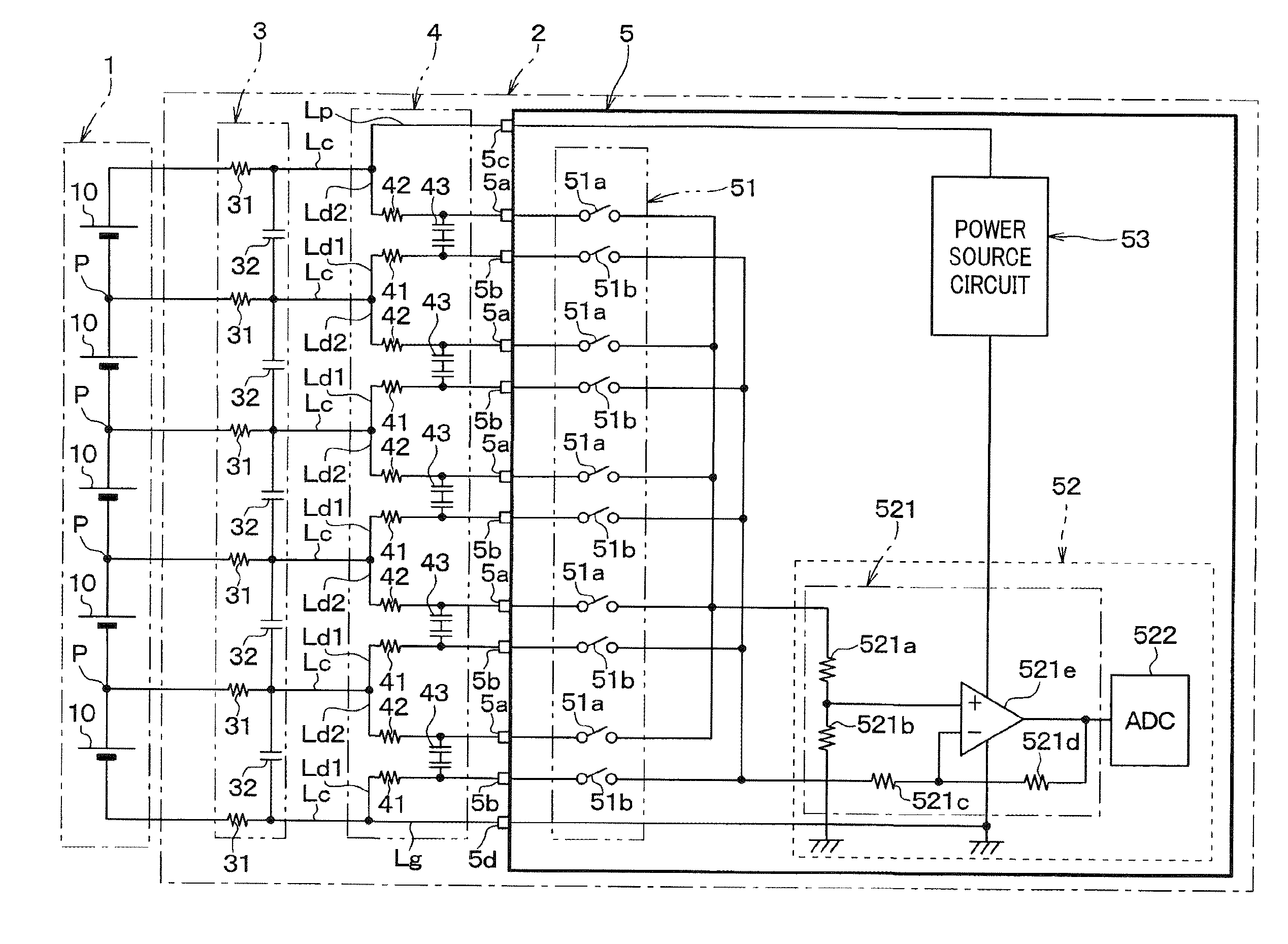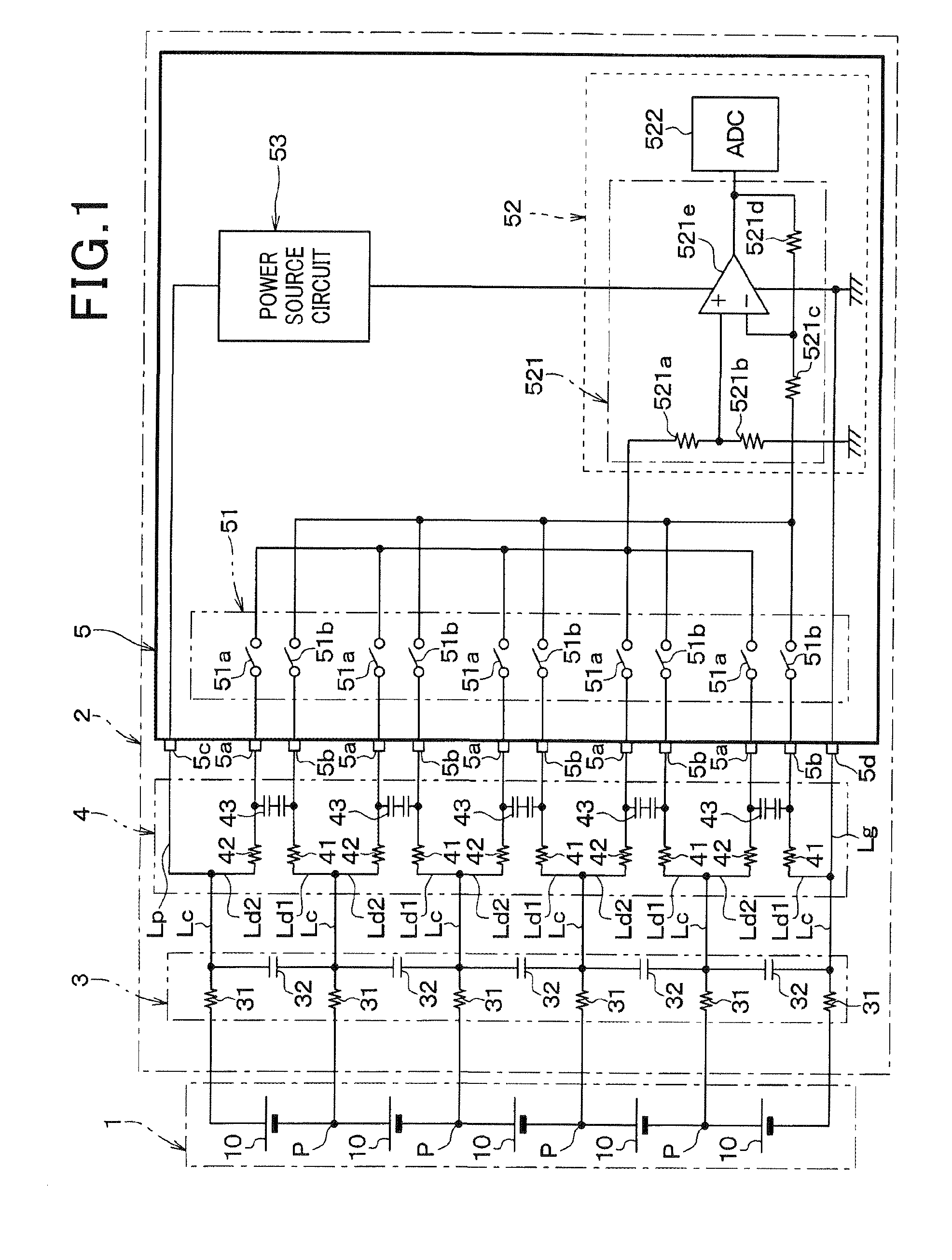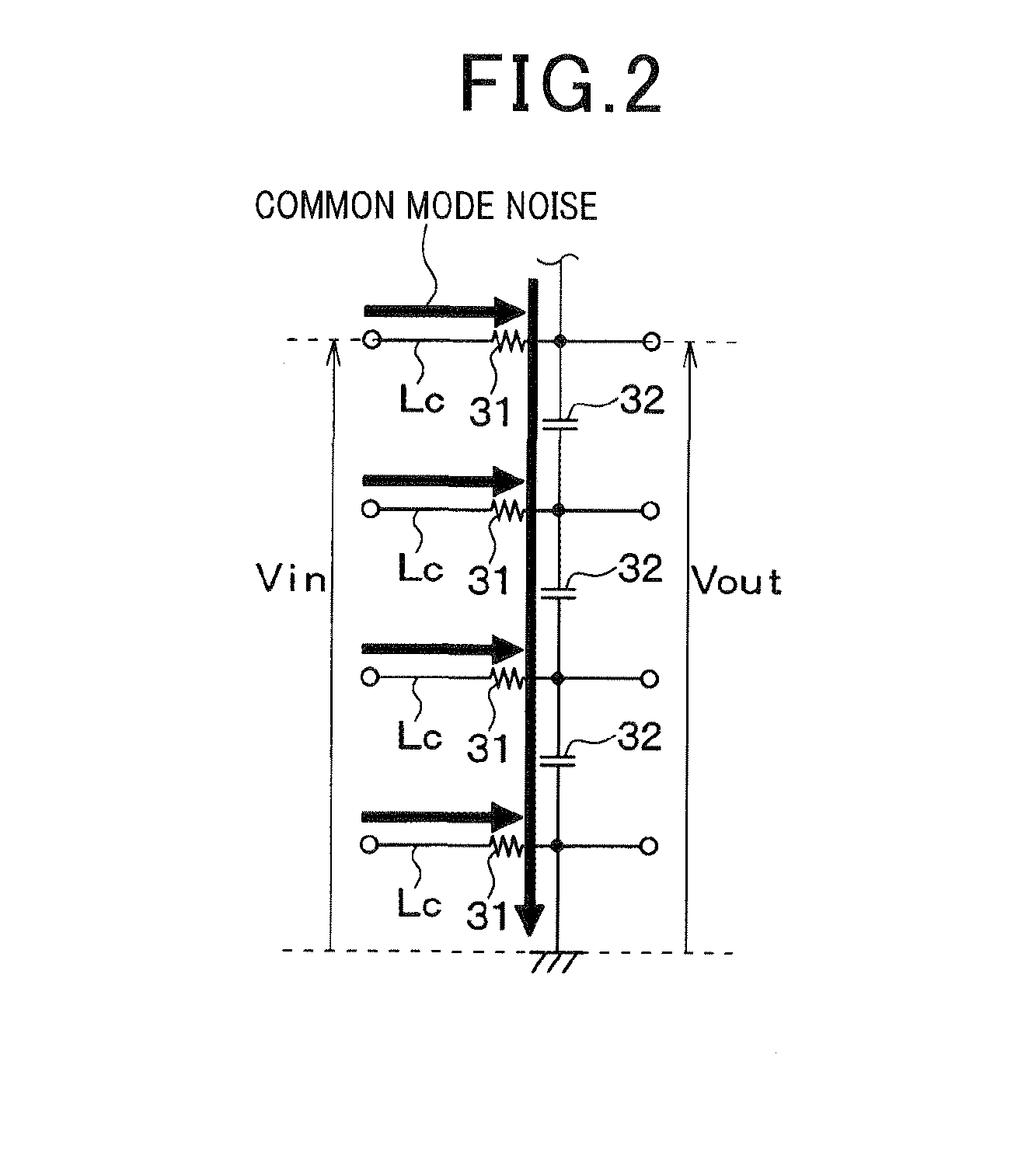Battery monitoring apparatus
a battery monitoring and battery technology, applied in the field can solve the problems of insufficient attenuation of common mode noise (in-phase fluctuation), drastic increase of manufacturing cost of battery monitoring apparatus, and malfunction of monitoring circuit, so as to reduce the fluctuation of cutoff frequency
- Summary
- Abstract
- Description
- Claims
- Application Information
AI Technical Summary
Benefits of technology
Problems solved by technology
Method used
Image
Examples
first embodiment
[0036]Referring to FIGS. 1 and 2, a first embodiment of the present invention is described. In the present embodiment, a battery monitoring apparatus 2 is applied to a battery pack 1 which is installed in a vehicle such as a hybrid vehicle or an electric vehicle. In this embodiment, the battery pack 1 and the battery monitoring apparatus 2 configure a battery system for vehicles.
[0037]The battery pack 1 serves as a power source that mainly supplies electric power to an electric motor, not shown, used for driving, as well as to various electrical loads installed in the vehicle. As shown in FIG. 1, the battery pack 1 is configured as a serial connection in which a plurality of battery cells 10 composed of secondary cells, such as lithium-ion cells, are connected in series. In the example shown in FIG. 1, the battery pack 1 is configured by five battery cells 10. However, the number of the battery cells 10 configuring the battery pack 1 is not limited to five.
[0038]The battery monitori...
second embodiment
[0070]Referring now to FIGS. 3 and 4, hereinafter is described a second embodiment of the present invention. The second embodiment is different from the first embodiment in the circuit configuration of the second filter circuit 3. In the present embodiment, an explanation of components identical with or similar to each other between the first embodiment are omitted or simplified.
[0071]As shown in FIG. 3, in the present embodiment, the second capacitors 32 of the second filter circuit 3 are each connected between the first and second branch lines Ld1 and Ld2 of the respective connecting lines. In this case, the second capacitors 32 of the second filter circuit 3 is connected in series with the first capacitors 43 of the second filter circuit 4, without passing through the first resistors 41 and 42.
[0072]Specifically, each of the first capacitors 43 is connected between the second branch line Ld2 and the first branch line Ld1 of a pair of common lines Lc which are connected to the pai...
PUM
 Login to View More
Login to View More Abstract
Description
Claims
Application Information
 Login to View More
Login to View More - R&D
- Intellectual Property
- Life Sciences
- Materials
- Tech Scout
- Unparalleled Data Quality
- Higher Quality Content
- 60% Fewer Hallucinations
Browse by: Latest US Patents, China's latest patents, Technical Efficacy Thesaurus, Application Domain, Technology Topic, Popular Technical Reports.
© 2025 PatSnap. All rights reserved.Legal|Privacy policy|Modern Slavery Act Transparency Statement|Sitemap|About US| Contact US: help@patsnap.com



